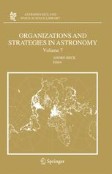Search
Search Results
-
Planetary Magnetic Field Measurements: Missions and Instrumentation
The nature and diversity of the magnetic properties of the planets have been investigated by a large number of space missions over the past 50 years....
-
Planetary Magnetic Field Measurements: Missions and Instrumentation
The nature and diversity of the magnetic properties of the planets have been investigated by a large number of space missions over the past 50 years....
-
Space Exploration of Planetary Magnetism
This chapter gives a brief overview of the major observational advances in our quantitative knowledge of the intrinsic magnetic fields of the 8...
-
Composition Measurements of a Comet from the Rosetta Orbiter Spacecraft
The European Space Agency (ESA) Rosetta Spacecraft, launched on March 2, 2004 toward Comet 67P/Churyumov-Gerasimenko (C-G), carries a complementary...
-
Space Exploration of Planetary Magnetism
This chapter gives a brief overview of the major observational advances in our quantitative knowledge of the intrinsic magnetic fields of the 8...
-
Capabilities of Philae, the Rosetta Lander
In situ (and sample return) space missions are the most promising tools to investigate the origin and evolution of comet nuclei. We present the...
-
RPC: The Rosetta Plasma Consortium
The Rosetta Plasma Consortium (RPC) will make in-situ measurements of the plasma environment of comet 67P/Churyumov-Gerasimenko. The consortium will...
-
The Two Wide-angle Imaging Neutral-atom Spectrometers (TWINS) NASA Mission-of-Opportunity
T wo W ide-angle I maging N eutral-atom S pectrometers (TWINS) is a NASA Explorer Mission-of-Opportunity to stereoscopically image the Earth’s...
-
RPC-MAG The Fluxgate Magnetometer in the ROSETTA Plasma Consortium
The fluxgate magnetometer experiment onboard the ROSETTA spacecraft aims to measure the magnetic field in the interaction region of the solar wind...
-
RPC-IES: The Ion and Electron Sensor of the Rosetta Plasma Consortium
The ion and electron sensor (IES) is part of the Rosetta Plasma Consortium (RPC). The IES consists of two electrostatic plasma analyzers, one each...
-
The Rosetta Lander (“Philae”) Investigations
The paper describes the Rosetta Lander named Philae and introduces its complement of scientific instruments. Philae was launched aboard the European...
-
RPC-ICA: The Ion Composition Analyzer of the Rosetta Plasma Consortium
The Ion Composition Analyzer (ICA) is part of the Rosetta Plasma Consortium (RPC). ICA is designed to measure the three-dimensional distribution...
-
The Plasma Environment of Comet 67P/Churyumov-Gerasimenko Throughout the Rosetta Main Mission
The plasma environment of comet 67P/Churyumov-Gerasimenko, the Rosetta mission target comet, is explored over a range of heliocentric distances...
-
TandEM: Titan and Enceladus mission
TandEM was proposed as an L-class (large) mission in response to ESA’s Cosmic Vision 2015–2025 Call, and accepted for further studies, with the goal...

-
The Rosetta Mission: Flying Towards the Origin of the Solar System
The ROSETTA Mission, the Planetary Cornerstone Mission in the European Space Agency’s long-term programme Horizon 2000, will rendezvous in 2014 with...
-
RPC-MIP: the Mutual Impedance Probe of the Rosetta Plasma Consortium
The main objective of the Mutual Impedance Probe (MIP), part of the Rosetta Plasma Consortium (RPC), is to measure the electron density and...
-
RPC-LAP: The Rosetta Langmuir Probe Instrument
The Rosetta dual Langmuir probe instrument, LAP, utilizes the multiple powers of a pair of spherical Langmuir probes for measurements of basic plasma...
-
Chronology
This table covers all kinds of high-rate phenomena, such as percussion, blast, shock waves, explosions, implosions and impact as well as milestones...
-
EUROPLANET: EUROPEAN PLANETOLOGY NETWORK
Funded by the European Commission under the FP6, Euro-PlaNet’s goal is munity for maximizing the science produced by the international planetary...
-
The Solar Atmosphere and Space Weather
First ideas about possible physical influences of the Sun on Earth other than by electromagnetic (EM) radiation were scientifically discussed more...
